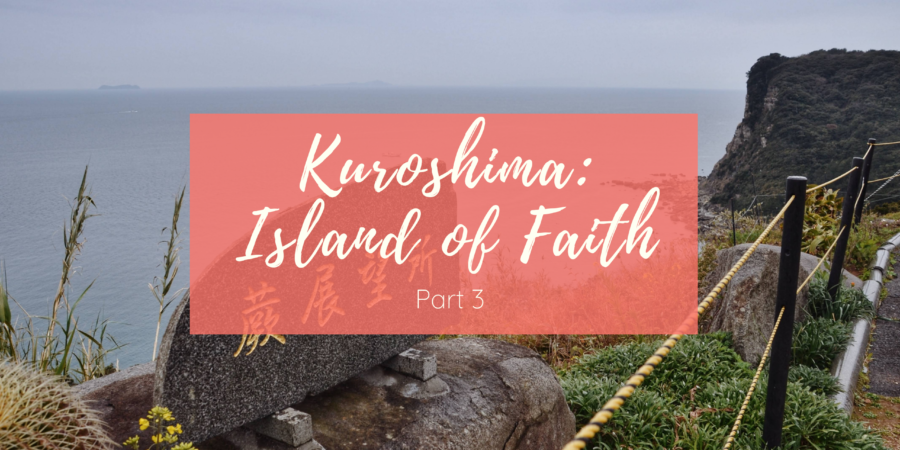Finally finishing my recap of the Kuroshima trip, which was more than half a month ago! If you don’t remember, in the last post, I talked about the Deguchi family and some trees (it sounds boring when I put it like that). Well, after visiting those two sites, our guide brought us to a lookout point.
As he drove, we passed a few boar traps and we learnt that the boars swam over from Takashima around 10 years ago. And in 10 years, they have managed to become a huge nuisance. There are traps everywhere, and fields have to be surrounded with electric wires, lest the crops get eaten. Speaking of the crops, the soil on Kuroshima is red soil, which is rich in iron. And I’m not sure why (any agriculture students willing to share?) but the vegetables here don’t become very large because of the soil. But, they are delicious.
The wind here is really strong, and you do not want to be here during a typhoon because you might be blown away. And we heard that quite a few of the Christians here were originally aiming for the Goto islands, but ended at Kuroshima because the wind blew them here.
And here’s a panorama:
Our last stop was the beach, and the guide did tell us a lot of things, but I couldn’t really catch what he said (I think he was talking about the lava beds – 溶岩 (yougan)) and Google did not help so I won’t share them here. Instead, I’ll just spam you with pictures:
This lava bed is apparently very long (perhaps the longest? Please don’t take my word for it though)
Oh yes, and fish are farmed in these rings! I can’t remember if I mentioned it, but the fish we got for lunch was caught, not farmed!
| our guide |
Our guide showed us lots of tiny clams like this. Apparently, they’re edible and there are tons of types of clams too. (We felt rather bad because we probably crushed a few clams with every step that we took)
We were also told that there were two types of rock here – one is sand and hence gets worn down, while the other stays the same.
| sis |
And this brings us to the end of the recap! If you’re ever in Sasebo, I would highly recommend spending a day here, especially if you are interested in Japanese history and like nature. It’s a little of the beaten track, but it’s definitely worth the trouble!
